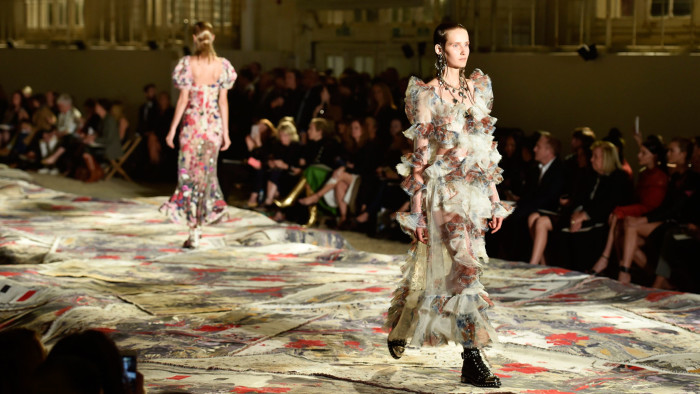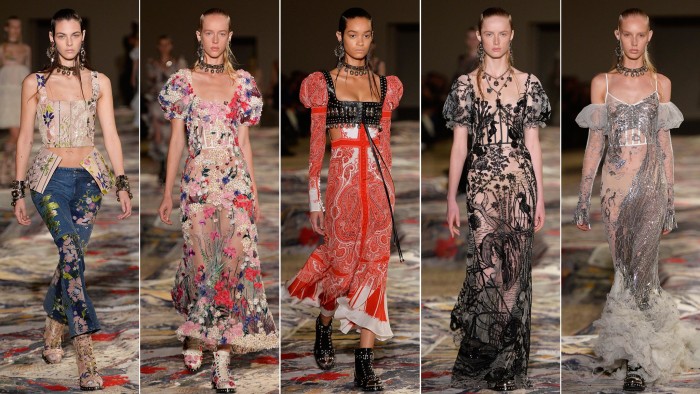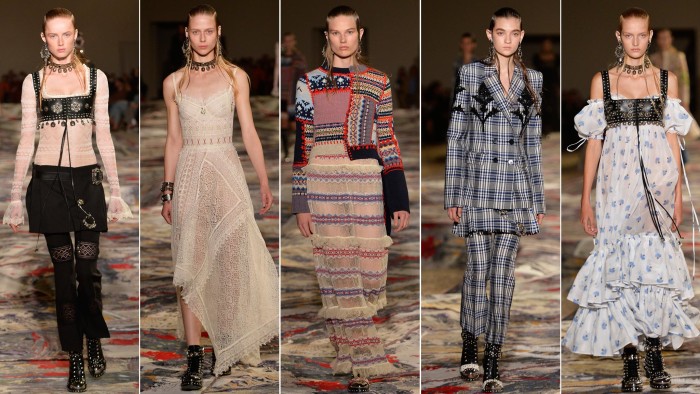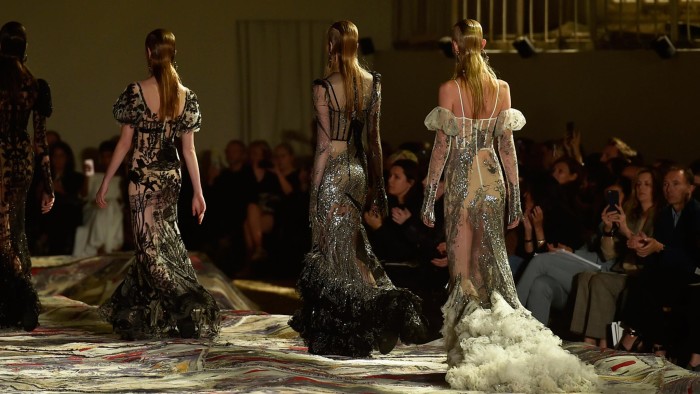Alexander McQueen SS17 show report: Paris Fashion Week

Simply sign up to the Life & Arts myFT Digest -- delivered directly to your inbox.
Sarah Burton took the house of Alexander McQueen back to Scotland for SS17. The Highland landscapes and mythologies of Caledonia were constant references for the designer Lee McQueen during his lifetime and the inspiration behind some of his most powerful shows. “Highland Rape”, one of his earliest and most controversial collections, in 1995, featured tailored tartans, tethered laces and the “bumster” trouser cut; “The Widows of Culloden” show, in 2006, took the Jacobite rebellion as its cue to present a hauntingly beautiful collection celebrating heritage and loss, and culminating in the holographic spectacle of Kate Moss vaporising into mist.
That artwork was the centrepiece of the McQueen show that toured so successfully after it opened at the Metropolitan Museum of Art in New York in 2011, and has become one of the house’s most famed motifs. McQueen is a brand defined by its Scottish connection, and perhaps given the febrile political temperament in Britain lately, whereby England and Scotland sit on either side of the Brexit split, it was an act of fashionable solidarity to revisit the country here.

Burton’s Scottish vision was not one of subjugation and violence however, but a lighter, gentler one of communities entwined by craft. The designer had shot an advertising campaign in the Highlands and was surprised by the brightness of its geography and “almost Nordic” landscapes. The catwalk was lined in Taatit rugs, the blankets traditionally given as weddings gifts and sewn together from pieces made by the families of both bride and groom. Her collection similarly stitched together different craft skills: “The collection was about coming together, and the imperfections in that unity,” she explained backstage. Such magical thinking in 2016.

And it was a magical collection, celebrating craft but also the most exquisite and evolved artisanal skills, where traditional materials had been reinterpreted by the hands of the atelier in dazzling technical ways. Wools had been woven into laces; strips of Fair Isle sat next to lace; Celtic checks featured jetbead embroideries. Elsewhere, real lace had been “pieced and patched” and stitched together, leather and denim were embroidered with multicoloured Scottish flora.
There was tremendous delicacy in the handiwork here, and a more relaxed silhouette. Burton had included thin lace corsetry within the gowns but her aim was to “wrap the clothes around the body . . . To embrace the female body not harness it.” Lee McQueen was less kindly with the female form, his cuts, while exquisite, were constrictive and sometimes downright cruel. Burton has moved away from this ideal, and her collection celebrated femininity in a far gentler manner.

The sense of haunting melancholia, however, was not lost. A final trio of dresses, embroidered in jet beads, crystals and silver sequins, depicted a square rigger crashing in the surf. Around the hem, silvery slithers of white tulle rippled and bounced, as delicate as sea mist. It was, without question, the most exquisite shipwreck ever seen.
Comments